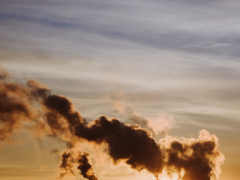Environmental challenges around the Rhine and Yangtze rivers are very similar
The river basins of the European Rhine and the Chinese Yangtze feature similar challenges: environmental pollution, greenhouse gas emissions, biodiversity, urbanisation and climate adaptation. The approaches to these in the river basins can therefore be compared and the countries involved can learn from each other.
This is the reason why the China Council for International Cooperation on Environment and Development (CCICED), in which the Netherlands is represented, is looking at policy to address these environmental challenges. PBL and the China Academy of Urban Planning and Design (CAUPD) outline historical developments in the publication Rhine Yangtze river basins 1950–2050, so that differences and similarities can be compared.
The mechanisms and spatial structures of the Rhine and Yangtze are very similar, although the Yangtze river basin is about 10 times larger than that of the Rhine. Both rivers have major port cities (Shanghai and Rotterdam) and are traditionally considered the economic backbone of the continent/subcontinent in which they are located.
Within a river basin, there are many relationships and mutual dependencies between habitat themes. Think of water pollution moving downstream and hydropower plants that may generate clean energy but adversely affect biodiversity and water safety downstream. Also linked to river basins is the urbanisation that traditionally takes place along rivers. This urbanisation is inextricably linked to industry and therefore to pollution and greenhouse gas emissions. In many places, climate change is intensifying the problems surrounding all these issues.
The study shows that, in the Rhine basin, the large degree of urbanisation started much earlier, which also applies to environmental pollution and to when this was being addressed, and there is currently ample attention for reducing greenhouse gas emissions and climate adaptation. In contrast, in the Yangtze river basin, urbanisation and environmental degradation are more recent and must now be managed at the same time as decarbonisation and climate adaptation. Notable for both river basins is the role of agriculture in relation to environmental pollution, water safety and biodiversity.
The study compares main developments and policy measures since 1950 for both river basins and looks ahead to 2050. The river basins can learn from each other: along the Yangtze, a lot of experience has been gained over a short period of time with climate adaptation (e.g. in the form of sponge cities), and chemical complexes in the river’s immediate vicinity have been moved more inland to prevent river pollution. Along the Rhine, the Room for the River policy programme in the Netherlands exemplifies integrated long-term planning. The International Rhine Commission also shows how transboundary water pollution and water safety, amongst other things, are addressed in a coordinated way.




